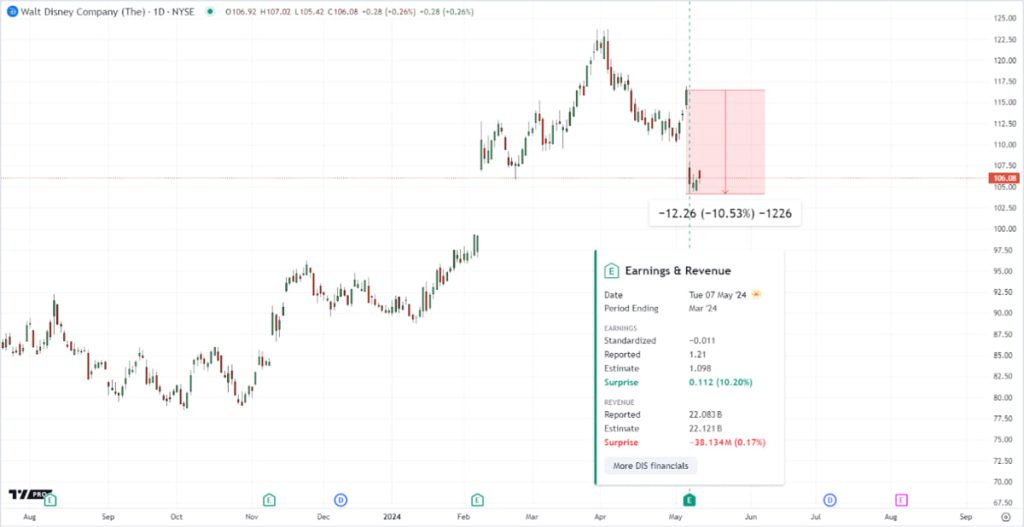Disney (NYSE:DIS) has impressed analysts with its recent financial results, surpassing earnings expectations despite some challenges in its streaming services division. The main contributors to this success were the growth in profits from theme parks and a significant reduction in losses for Disney Streaming. Disney’s profit rose to $1.21 per share in the first quarter, with a 12% increase in profit from the amusement parks division.
The theme parks are crucial for Disney’s financial health. They generate direct revenue from ticket sales and services while also enhancing the company’s brand and marketing strategy. The profit boost in this segment can be partially explained by a strategic increase in ticket prices, which offset costs and improved margins while maintaining steady visitor numbers. The rise in profits for parks and resorts also stemmed from increased demand following the lifting of COVID-19 restrictions. The streaming division’s losses decreased to $18 million from $659 million a year earlier, thanks to faster growth in subscription revenue compared to content and marketing expenses.
Disney Streaming’s reduced losses are likely due to improved efficiency and cost control. However, Disney+ has seen a slowdown in subscriber growth, disappointing investors and affecting the company’s stock performance post-report. The net increase in Disney+ subscribers was below analysts’ forecasts. As a result, Disney shares fell after the publication of the reports, keeping it off the top stock gainers list. Despite missing subscriber forecasts, Disney has posted profits for four consecutive quarters, showcasing successful strategy and business optimization.

Fewer subscribers than expected could indicate market saturation or heightened competition from other streaming platforms. Nevertheless, investments in this area aim to enhance technical infrastructure and service quality, which is critical in the competitive streaming industry. Disney plans to boost profitability by adopting Netflix’s strategy of cracking down on password sharing, set to begin in June. This strategy, which previously boosted Netflix stock, is expected to deliver similar benefits for Disney
Additionally, Disney continues to invest in innovation and strategic partnerships for growth. For instance, investments in Epic Games, the creator of Fortnite, offer Disney opportunities in interactive entertainment and digital content expansion. This allows Disney to expand its presence in interactive entertainment and engage audiences with new formats involving their favorite characters and stories.
The resumption of dividend payments highlights Disney’s stability and reliability of the company, appealing to long-term investors. Despite short-term stock fluctuations, which can be easily monitored in a market replay, Disney’s long-term prospects remain promising.
The company’s strategic and predictable approach to service development, combined with the cultural significance of its brands, provides a solid foundation for growth and global influence. A particularly promising area is the continued fusion of classic entertainment with innovations in interactive content and virtual reality technologies. Advancements in consumer technologies like 5G can enhance these trends, offering Disney new ways to create unique user experiences that could redefine the entertainment industry.
Overall, Disney is adapting well to changing market conditions and customer preferences. Even in challenging segments like streaming, the company demonstrates an ability to turn obstacles into opportunities. Sustainable profitability and strategic investments put Disney in an advantageous position to maintain its competitive edge and continue growing despite factors like shifting media consumption trends and global economic uncertainties.
